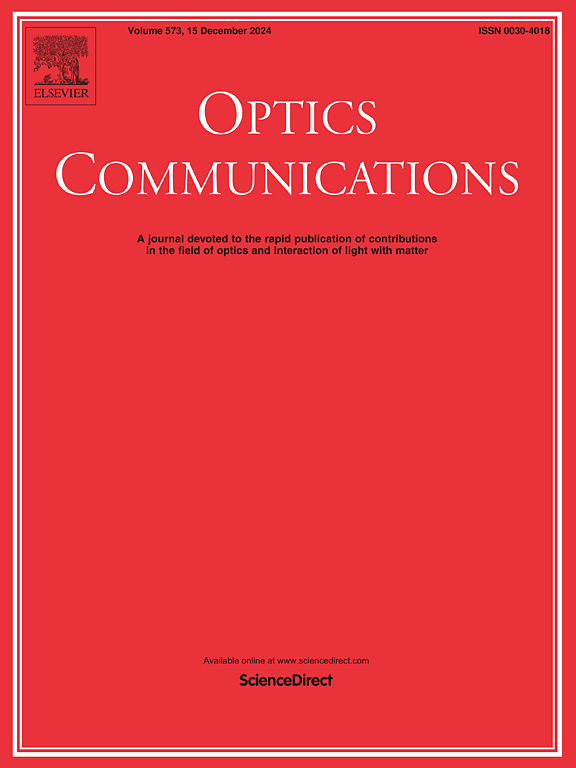Large circular dichroic long-wave infrared polarization photodetector based on rotationally operated chiral metasurfaces
IF 2.2
3区 物理与天体物理
Q2 OPTICS
引用次数: 0
Abstract
A long-wave HgCdTe (MCT) detector, akin to the human eye, cannot inherently discern light polarization. Therefore, a miniature polarization filter needs to be placed in front of the image sensor, which defines the intensity of the different polarization modes. However, the circular dichroism and circular polarization extinction ratios of these miniature polarization detectors are typically not very high in the mid and long wavelength bands, which severely limits the polarization resolving power of the pixels. We numerically simulate a circularly dichroic metasurface based on the silicon material, gradually break the spatial symmetry through displacement and rotation operations of the unit cell of metasurface, and analyze the cause of the large chiral symmetry based on the FP mode and near-field map of the electric field intensity. The resulting high-quality chiral metasurface-based photodetector achieves remarkable circular dichroism and circularly polarized extinction ratios of 0.97 and 20 dB, respectively, promising advancements in microdetector technology from intensity to polarization detection. Last but not least, the use of silicon materials aligns with established silicon-based processes, reducing theoretical process preparation challenges.
求助全文
约1分钟内获得全文
求助全文
来源期刊

Optics Communications
物理-光学
CiteScore
5.10
自引率
8.30%
发文量
681
审稿时长
38 days
期刊介绍:
Optics Communications invites original and timely contributions containing new results in various fields of optics and photonics. The journal considers theoretical and experimental research in areas ranging from the fundamental properties of light to technological applications. Topics covered include classical and quantum optics, optical physics and light-matter interactions, lasers, imaging, guided-wave optics and optical information processing. Manuscripts should offer clear evidence of novelty and significance. Papers concentrating on mathematical and computational issues, with limited connection to optics, are not suitable for publication in the Journal. Similarly, small technical advances, or papers concerned only with engineering applications or issues of materials science fall outside the journal scope.
 求助内容:
求助内容: 应助结果提醒方式:
应助结果提醒方式:


